| New York
Architecture Images- Recent 400 Park Avenue South |
|
| Please note- I do not own the copyright for the images on this page. | |
|
architect |
Design Architect: Atelier Christian de Portzamparc
Architect of Record: Handel Architects |
|
location |
400 Park Avenue South |
|
date |
Proposed |
|
style |
Deconstructivism |
|
type |
Apartment Building 432 rental apartments ranging from studios to three-bedrooms |
|
construction |
Facility: Residential, Retail Size: 450,000 SF Cost: $80 Million Status: Design Development 476 Ft / 145 M 39 Floors |
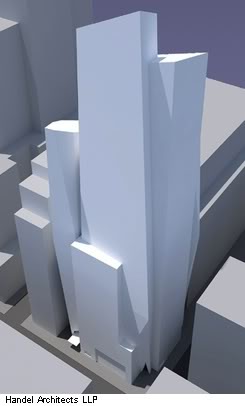 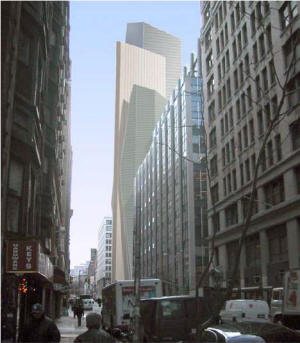 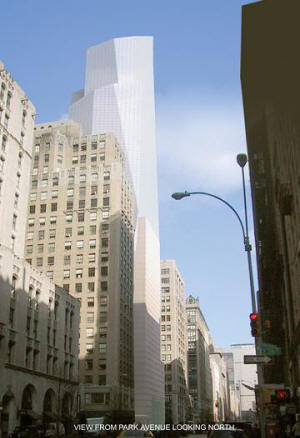 |
|
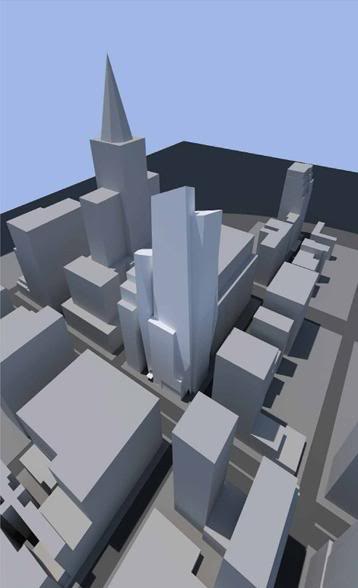 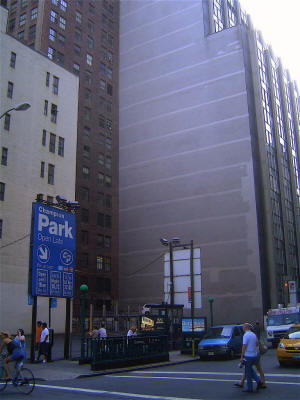 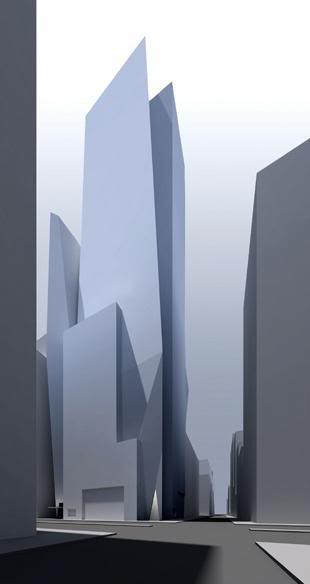 |
|
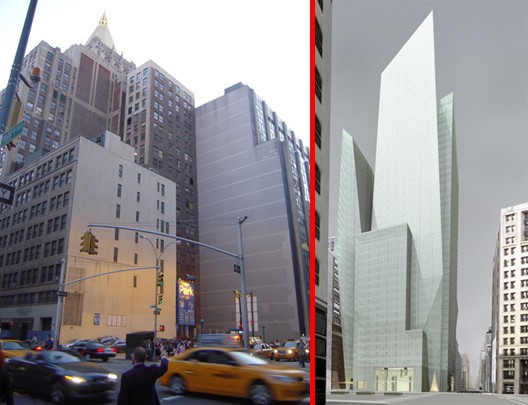 |
|
|
notes |
400 Park Avenue South A 40-story tower comprised of 432 rental apartments ranging from studios to three-bedrooms is planned on the site of a parking lot. The project at 28th Street is being designed by Handel Architects and Atelier Christian de Portzamparc, and was approved by the Department of City Planning and local Community Board, though work has not yet begun. A subway entrance and retail space will occupy the ground floor, while a fitness club and kids' center will be located on the second floor. This residential tower on Manhattan’s East Side is currently in Design Development and recently won Department of City Planning and Community Board approval. The 40-story tower is comprised of 432 rental apartments ranging from studios to three-bedrooms. A subway entrance and retail space occupy the ground floor, while a fitness club and kids’ center are located on the second floor. The exterior of the building is faceted glass curtainwall. http://www.handelarchitects.com/  Christian Portzamparc and Gary Handel are proposing this 476 ft tower at the south west corner of east 28th st and Park Ave. They have also responsible for the very popular LVMH tower on 57th street. The site is currently a parking lot that is operating. The tower will sit on top of the 28th st stop on the 6 train and has a subway entrance included in the design. The totally bonkers 40-story apartment tower planned at 400 Park Avenue South has been kicking around since the first half of the last decade, and in recent years has been tossed onto the pile of fantastical renderings that will never see the light of day. That was then! Now New York is enmeshed in the biggest Christian invasion since the Crusades, and French starchitect Christian de Portzamparc's glassy giant might actually have a pulse. (C-deP also has Carnegie 57 and Riverside Center on the boards.) The site is a parking lot at 28th Street and the adjacent eight-story building at 396 Park Avenue South. Developers Albert and Roy Kalimian bought up mucho air rights along Madison Avenue to set the stage for the 436-unit building (which would also have retail and a new 6 train entrance) before the project went into hibernation. Now the parking lot is closed and a demolition permit has been approved for 396 Park Ave. South. There's oodles more evidence that the Fortress of Glassitude (working title; we're open to suggestions!) is on the way. Such as this stuff. >> A Curbed tipster dropped by the site and did a bit of snooping: Spoke to a Owner Rep at the location (wouldn't give his name) says existing 8 story building to be fully demolished by late fall. New Residential Development to be built in its place. Parking lot by 28th Street is closed (Sign says it will reopen in December, but owner rep says new building to be entire block). Of course a cheaper, non-Frenchie building might be the new plan, but interestingly the original building permit—filed in 2005 by architect-of-record Handel Architects—was disapproved only this past October, indicating fresh filing action (and maybe some imminent fine-tuning). A Wired New York contributor also noticed that 400 Park Avenue South, which has been on Portzamparc's website forever, now mentions a 2010 start and a 2012 completion. Kaboom! With the Gansevoort Park hotel opening one block up, this stretch of Park Avenue South is getting interesting in a hurry. Anyone else got intel? · Projects: 400 Park Avenue South [Atlelier Christian de Portzamparc] According to the archibabble, the building "extends the facades of the neighboring 1930's historical buildings, the towers responding to each other in New York's skyline." If you say so, C-deP! |
|
|
|
|
|
Square Feet "Counting on a Hotel to Make a
Neighborhood Hot" By C. J. HUGHES August 22, 2007 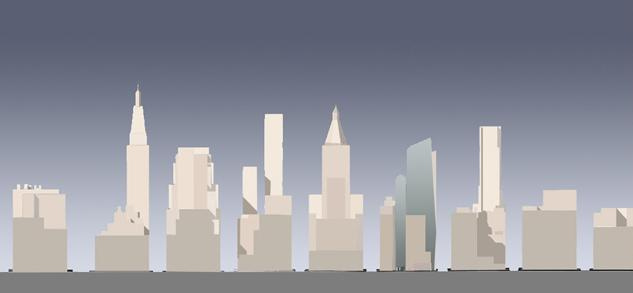 To understand how the meatpacking district in downtown Manhattan was transformed from an obscure collection of a few bistros and boutiques scattered among beef-filled warehouses to a hot residential, commercial and entertainment destination, consider Michael Achenbaum’s explanation. Stephen B. Jacobs Group A developer is betting that his Gansevoort Park hotel, above, can replicate the success of his Hotel Gansevoort in Manhattan. The area around Park Avenue South and East 29th Street. One crucial event, he said, was the debut of the Hotel Gansevoort in March 2004 at West 13th Street and Ninth Avenue. After that, he said, the neighborhood suddenly seemed to have a lot more electricity. Mr. Achenbaum is not entirely objective, of course; he was the hotel’s developer. But the opening of his 13-story 187-room glass-and-steel property, which cost $70 million to build, was a relatively early signal to other investors about the area’s potential. In addition, the building’s distinctive rooftop bar and pool, open to nonguests, were almost instantly trendy and heightened the buzz about the neighborhood. Now Mr. Achenbaum, a principal of WSA Management, based in Garden City on Long Island, hopes to copy that neighborhood-fostering success with a new hotel, Gansevoort Park, at the southwestern corner of Park Avenue South and East 29th Street. It is to be developed with Centurion Realty, whose portfolio includes four million square feet of residential and commercial properties, including 12 other New York buildings. The hurdles, though, might be more daunting, since the area — squeezed between Murray Hill and the Flatiron District, with an unremarkable hodgepodge of phone stores, pharmacies and 16-story offices — does not have a catchy name, or much cachet. Still, Mr. Achenbaum is thinking splashy, and big: a 19-story glass-and-limestone building with 225 rooms, which will cost $200 million. (The financing is being provided by HSH Nordbank, a German commercial bank, and was locked in before the current credit crisis, he said.) A wide 150-foot-tall glass column containing light-emitting diodes will display mutating colors along the corner of the building’s facade, in a nod to four similar 15-foot columns at the Hotel Gansevoort. Gansevoort Park’s top three floors, open to the public, will cover 8,000 square feet. They will include bars, decks and a pool, though the exact configuration is being kept secret, Mr. Achenbaum said, to prevent a competitor from trying to install a similar feature before the hotel is finished in the spring of 2009. Guest-only areas will include a 3,500-square-foot catering space on the third floor, an outdoor deck and a 2,000-square-foot mezzanine-level spa. A 10,000-square-foot glass-fronted restaurant space on the sidewalk level, meanwhile, will be leased by Prime One Twelve, a New York offshoot of a Miami Beach steakhouse, though Mr. Achenbaum would not discuss the terms. He would say, though, that he hopes to get $200 a square foot in annual rent for an adjacent two-floor 1,800-square-foot retail space, preferably from a clothing store. The hotel site, which encompasses seven parcels that wrap around the corner, now holds a series of low-slung drab buildings, with street-level tenants that include a shoe store, a French restaurant and a bank. Demolition is to start next month, Mr. Achenbaum said. Gansevoort Park is likely to attract a different clientele than the midmarket hotels that dot the surrounding blocks. Many were built at the turn of the last century, when this neighborhood was a thriving hotel district. Similar-size hotels, like Hotel Thirty Thirty, which offers 253 rooms at 30 East 30th Street, or the Carlton, with 316 rooms at 88 Madison Avenue, charge about $250 a night for rooms on summer weekends. Gansevoort Park’s rooms, meanwhile, will cost about twice that. 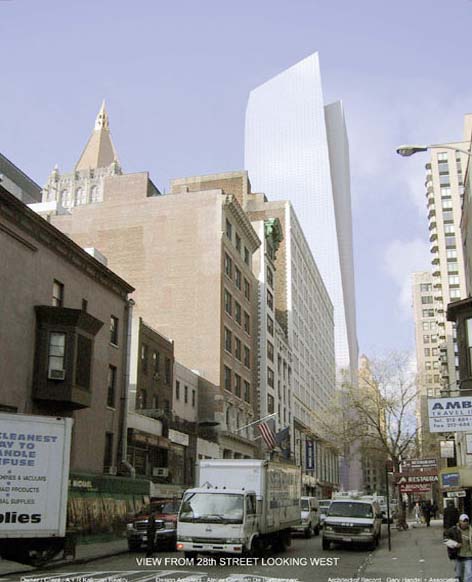 If the Park Avenue South area is underserved by luxury hotels, so is New York City over all, and the time is right to build them, said Daniel Lesser, a senior managing director with CB Richard Ellis and a specialist in hospitality real estate. In the last few years, conversions of hotels into condominiums have claimed more than 2,000 rooms in Manhattan, Mr. Lesser said, and the city is poised to lose almost that many more, with the imminent closing of the Hotel Pennsylvania, near Madison Square Garden, which has 1,700 rooms. Strong demand for New York’s existing 67,000 rooms has meant an average weekly occupancy rate in the last year of 82 percent, according to Smith Travel Research, a lodging industry data provider based in Hendersonville, Tenn. In practical terms, this means weekend nights are usually completely booked, said Jan Freitag, a vice president. By comparison, Miami, which also attracts a mix of business and leisure travelers, is filling 76 percent of its hotel rooms, while San Francisco is at 72 percent. “Any new hotel makes sense, because the city clearly needs rooms,” said Mr. Lesser, without commenting on the Gansevoort Park specifically. “And this goes for every submarket, river to river, from 125th Street to Lower Manhattan.” Gradually, developers seem to be responding. About 8,000 rooms are now under construction, which would be a 12 percent increase, according to Smith Travel. Some, like Gansevoort Park, are planned for traditionally underserved areas; other neighborhoods that have been identified as prime sites are the Bowery and Harlem. Although Gansevoort Park’s developers may sell some rooms as condos, for now they are focused on making the property a round-the-clock business, they said. It is critical, then, that they attract those who work in the area, at employers like Credit Suisse First Boston, which has large offices at 1 and 11 Madison Avenue, about five blocks away, said Nathan Gindi, vice president of Centurion Realty, which is based in Manhattan. “We want people to come in for lunch and after work, not just check in and out,” he said. “We want this to be a destination.” |
|
|
|